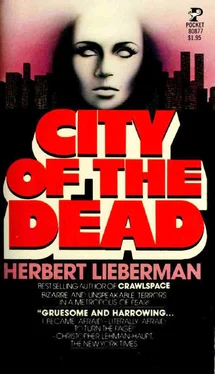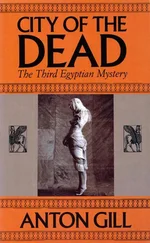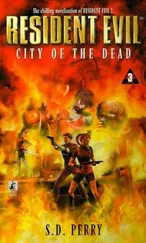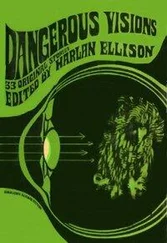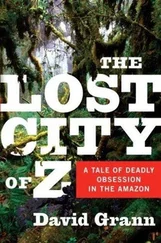“Just before we got there. They waited for your bag of cash to arrive. Then they did it. Had no intention of ever freeing her. They were getting ready to dump her in the bay when we busted in.”
Nodding his head ever so slightly, Konig hunches over his desk while Haggard waits wordless at the other end for him to react. But there’s no reaction. No shrieks. No groans. Not even a choice obscenity hurled at the gods. “Bring her in” is all he can say. “Bring her in now.”
At 6:45 a.m. on a Sunday morning the city has a soiled, spent look. The revelry and carnage of the night are over and soon the ragpickers and sweepers will come to clean up the mess. The big, buglike sanitation trucks will double-park in the side streets, grinding up the debris of today to make room for that of tomorrow.
Standing at a window now, Konig gazes over to the west. The sky is glowing neon pink and crimson above the Times Square area where some of the night lights have not yet gone out. It has the look of a city in flames.
Down below on the street the stray cats are picking among the overflowing trash cans. A few dirty pigeons wamble in the gutter and an old tart in a rumpled dress weaves precariously down 30th Street. Her hair is hennaed; she has a Kewpie-doll face heavily made up like a mask, a hideous maquillage. At a certain point she bumps into one of the trash cans, nearly knocking it over, but only dislodging the lid, sending it clattering to the pavement with a loud crash.
A few early risers are already out there too, walking the dogs, picking up the milk and The New York Times. Soon all the bells of the churches will be pealing. The great cathedral bells—St. Patrick’s, St. Bartholomew’s, St Clement’s, St. Mark’s—all the church bells of the great Empire City calling the faithful to worship. Great gorgeous bells tolling diapasons, their huge bronze throats sending great lead circles of sound skyward.
From somewhere far to the south Konig can hear the sound of a distant siren screaming northward up the FDR Drive. He gazes toward the river now. The water has a choppy, sullen look. A tugboat and a sand barge are out there plying upriver.
It had never occurred to him before how close the morgue was to the river. And then quite suddenly it dawns on him that its placement there was not merely fortuitous, that most of the morgues of the great cities of the world had been built either on the banks of or in close proximity to mighty rivers. Similarly, all the great necropolises of antiquity. All had been built on or near water. Some ancient superstition, no doubt, he thought, trying to recall some passage in Herodotus about that Something about facilitating the voyage of the soul back into the great ocean of time. Suddenly, as if in a flash, he has a vision of all the great rivers of the world-flowing at that moment into the East River: the mighty Nile and the Tiber, the Tigris and the Euphrates, the Danube and the Ganges, the Rhine and the Volga, and the Father of Waters, the Mississippi, all flowing past his window, bearing their cargoes of dead souls out to sea. Then suddenly, in another flash, he sees all the great necropolises of the world rising below him on the banks of the river—Memphis, Thebes, Carthage, Tyre, Persepolis. There, King Djoser’s mighty tomb, Saqqara, with its huge pentagons of marble columns. And there, the great mortuary temples all along the Nile—Luxor, Karnak, Birket Habu. He sees the Roman catacombs—St Calixtus and St Sebastian—those intestinal tunnels winding along beneath the Via Appia, and then, the funerary pyres, the burning ghats, beside the muddy Ganges. And there, the great efficient incinerators of Buchenwald and Auschwitz. Then, that even greater marvel of technological efficiency—Hiroshima, and its thousands incinerated in a flash. All those burial grounds, he sees. All those graves suddenly open and yawning. All those souls suddenly flowing past him on the river below his window.
Then, in another blink of an eye, the vision has boiled past, sinking slowly beneath the brown, sullen waters of the East River, leaving in its place only a view of the Queens skyline sprawling gray and squalid beyond it.
The sound of wailing sirens has grown louder and closer. Dozens of them appear to be converging on the spot where Konig stands, looking down into the street. Shortly several patrol cars turn into 30th Street, followed by a large black police van, swaying and tilting as it rounds the corner. Then come several more patrol cars and another van, causing a small crowd to collect outside the courtyard at the rear entrance.
Half a dozen night men from the morgue stream’ out into the courtyard, wheeling their steel gurney carts up to the vans. The doors of the patrol cars are opening and slamming, their dome lights still rotating slowly. Police pour out from them into the street, many of them sooty, unhatted, their eyes bleared, their uniforms strewn with ashes. The drivers of the big Black Marias are out now too, moving around in the courtyard, swinging open the big rear doors of the vans.
Then from both vans, simultaneously, a grisly cargo is unloaded. Nearly twenty cadavers, burned and charred beyond recognition, victims of a ghetto fire in Bed-Stuy. One sack after the next—women, children, the old, the young—all unloaded onto the shiny carts, then swiftly, efficiently wheeled through the big basement portal gates to the mortuary beyond.
There are more sirens and Konig watches a 41st Precinct patrol car turn the corner, leading another van. Yet another complement of the shot, the slashed, the bludgeoned and garroted. No more than a typical assortment of a no more than typical Saturday night.
At last another patrol car wheels slowly into the street. No van follows this. It rolls slowly down the street with a kind of bleak majesty, weaving through the gathering congestion, and turns into the courtyard just below the window. In the next moment, Konig sees Haggard’s fleecy white hair through the car window, then his tall, stooping figure climbing out from the front seat. His hat is off, his rumpled raincoat open, his tie loose at the collar. Two uniformed patrolmen get out of the car and come around the back.
Standing there in the sour dawn, in the slight, mizzling rain, Haggard glances upward and sees Konig standing two stories above him at the open window looking down. They stand there for a moment merely staring at each other.
Shortly, Konig himself is down in the courtyard, limping through the noise and confusion, past the chatter of police and porters, canvas sacks and rolling carts, past the gaping crowds gathered just outside a makeshift police cordon. He is moving directly toward the place where Haggard and the two patrolmen are struggling to remove a large canvas sack from the rear seat of the car.
Haggard glances up as Konig joins them, and without a word they gently lift the sack out of the back of the car. One of the porters, without knowing what is contained in the sack, rushes over with a cart and starts to take the sack from them. Instantly Konig’s face flushes, his eyes bulge. He flings the man roughly aside. It is the diener—the little Albanian with the furtive eyes.
“Don’t touch her,” Konig booms. “You keep your goddamned hands off her.”
Cringing, the little man gapes at him, then turns and slithers off into the milling confusion around the vans.
Haggard and the two patrolmen start to lift the sack onto the cart.
“Leave her alone,” Konig shouts, pushing them aside, prizing their hands from the canvas. “I’ll take her. I’ll take her now. Don’t touch her.”
They watch silently as he eases the sack onto the cart, then proceeds to push it, all by himself, down the ramp and through the large open gates leading to the mortuary.
Читать дальше
